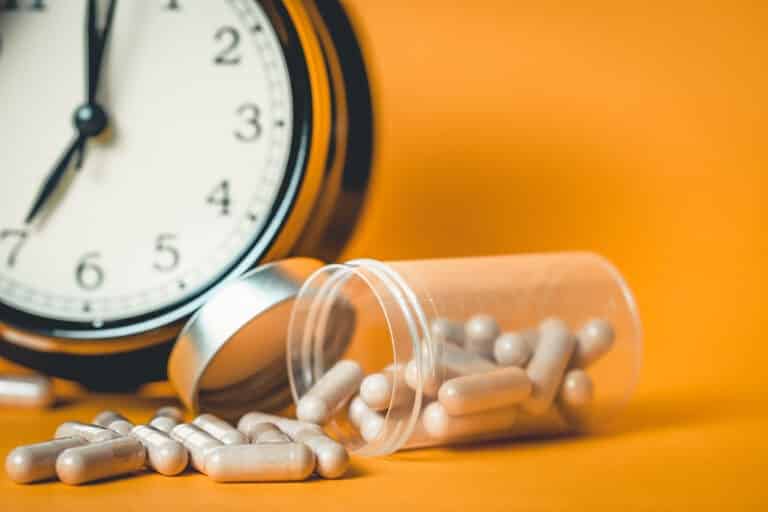Understanding how long different substances remain detectable in your system is a vital component of recovery and treatment processes. At our facility, we recognize that knowledge about drug persistence in the body not only aids in precise diagnosis and treatment planning but also empowers our clients to make informed decisions about their recovery paths. As different substances linger in the body for varying durations, it’s important to grasp the complexity behind drug testing and detection times.
This understanding comes into play when considering the usage of clinical tools like COWS, CIWA, and SMAST, which help evaluate substance withdrawal and the need for interventions. Each drug’s chemistry interacts uniquely with human biology, resulting in different elimination times. These are influenced by factors such as metabolism, frequency of use, and individual health conditions, which we will explore comprehensively. By educating ourselves and our clients about these interactions, we facilitate more tailored treatment approaches that respect each person’s unique journey toward sobriety. Hence, delving deeper into the science behind drug retention can significantly impact recovery strategies and outcomes.
Factors Influencing How Long Drugs Stay in Your System
The duration drugs remain in your system is not uniform; it varies widely and is influenced by several key factors. Firstly, metabolism speed plays a crucial role. Individuals with a faster metabolism tend to process substances more quickly. Age, overall health, and genetic makeup can significantly affect metabolic rate, altering how long a drug stays in one’s body. Secondly, the frequency and quantity of use also have a profound impact. Regular usage or higher doses can lead to accumulation in the body, extending the detection window.
Additionally, the type of substance used is a determinant factor. For instance, fat-soluble drugs like marijuana can stay in the body longer, especially in regular users, as the drug residues are stored in fat cells and are released slowly. Hydration and body mass are other key influencers; well-hydrated individuals may flush toxins faster, and those with higher body mass may retain substances longer due to fat storage. Understanding these factors helps us tailor detox and recovery plans more effectively, providing a personalized approach that anticipates various challenges in the detoxification process.
Overview of Common Drugs and Their Detection Windows
Different drugs have varying detection windows, which can substantially affect treatment and recovery strategies. For example, alcohol may only be detectable in the bloodstream for up to 24 hours, while substances like marijuana can be detected for up to 30 days in frequent users. Stimulants such as cocaine and methamphetamine typically exit the system faster, generally within a few days, depending on usage patterns and individual metabolism.
Opiates, a major concern in addiction treatment, including drugs like heroin and fentanyl, might have detection windows ranging from a few days to over a week. These times can extend depending on the method of ingestion and the body’s physiological responses to detoxification. Benzodiazepines used medicinally and recreationally, can also linger in one’s system for extended periods, especially with long-term use. Our approach considers these variances in persistence as we plan our detox programs and subsequent recovery support, ensuring each client receives the best care suited to their specific situation and needs.
Testing Methods for Drug Detection in the Body
In our quest to provide comprehensive treatment, understanding the various testing methods for drug detection is crucial. Blood tests, urine tests, hair follicle tests, and saliva tests are the primary methods used to detect the presence of drugs in an individual’s system. Urine tests are perhaps the most common due to their non-invasiveness and the ability to detect drugs days after use. Blood tests offer a shorter detection window but can precisely identify substances present in the system at the time of testing.
Hair follicle tests provide a much longer window of detection, tracing drug use back up to 90 days. Meanwhile, saliva tests are gaining popularity for their ease of administration and quick results, although they generally have a shorter detection window. Each testing method has its strengths and considerations, and selecting the appropriate one depends on the specific situation and the required accuracy of the detection timeframe. Implementing these tests wisely is key to tailoring our recovery programs effectively.
Implications of Drug Detection Times for Recovery and Treatment
Understanding drug detection times is not just about knowing how long drugs stay in the system; it significantly shapes the recovery and treatment landscape. Long detection times can influence the duration of detoxification programs and may require extended monitoring or support. Moreover, knowing the detection times helps in scheduling treatment sessions and follow-up tests to ensure that the recovery is on track and to prevent relapse.
Additionally, these detection times can impact legal and employment issues for individuals in recovery, making it crucial to provide accurate information and support. As we integrate this knowledge into our treatment programs, we can better manage expectations and provide a clear roadmap for our clients’ recovery journey. This tailored approach ensures that each individual receives the optimal combination of care and support to foster a successful journey back to health.
Conclusion
At Recovery Calculators, we understand that knowledge is the cornerstone of effective addiction treatment. By mastering the details about how long drugs stay in the body and utilizing the best testing methods, we empower our clients and their families to navigate the complex journey of recovery with confidence. Whether you’re just beginning to seek help or looking for sustained support in your ongoing journey, we’re here to provide a reliable addiction and sobriety calculator along with other helpful resources you need. Reach out to us today, and let us help you take the first step towards a healthier, drug-free life.


